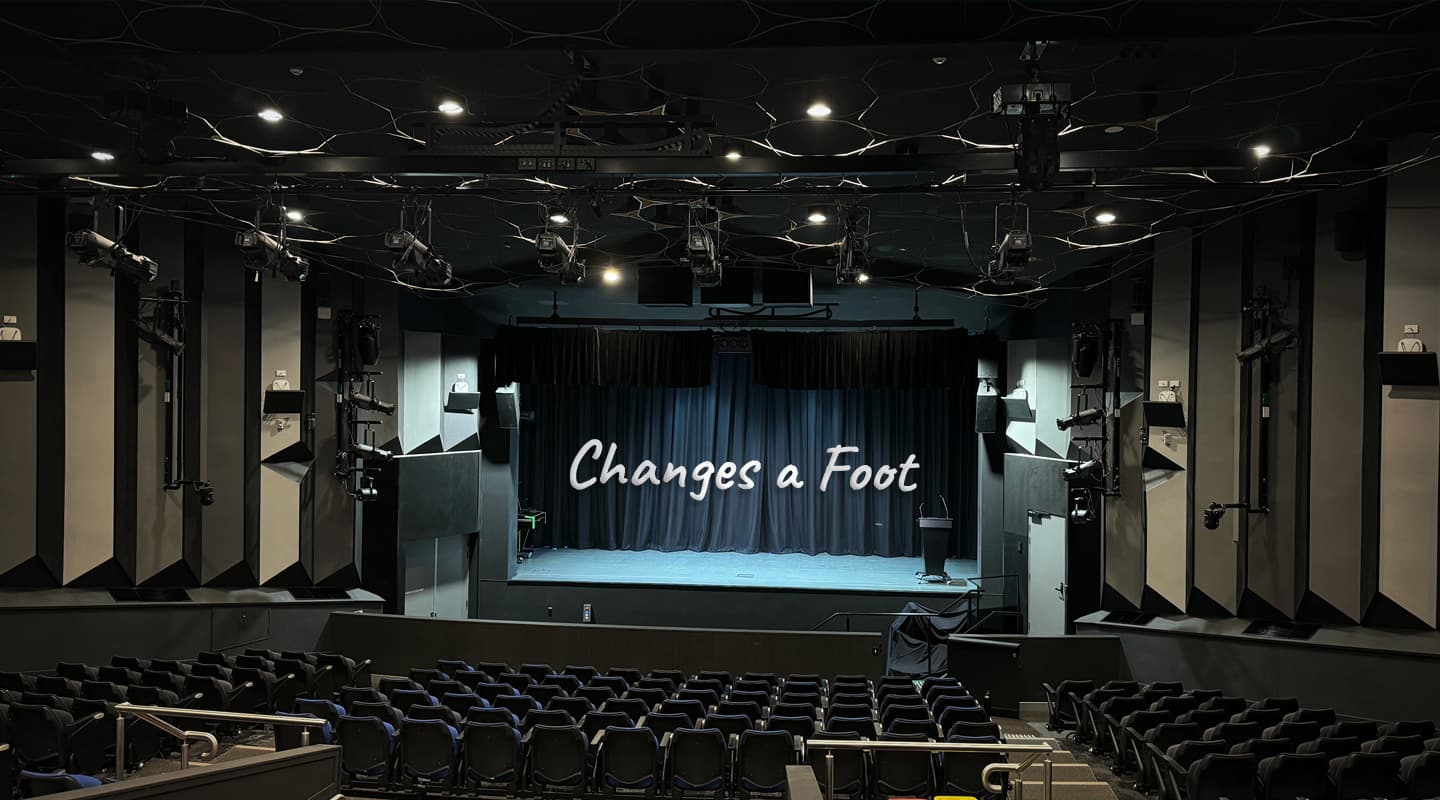
AV Case Study: Footbridge Theatre
University of Sydney’s Footbridge Theatre is back on the march, packed with adaptable networked technology.
Text:/ Christopher Holder
Craig Gamble puts it this way: “theatres… they’re hard. There are a lot of bits that have to come together.” Just as well, otherwise Craig would be looking for a different career. Setting Line is Craig’s theatre consultancy business and business is good. Theatres are specialised projects. Not just for the builder, or the electrician but for all the technology providers as well. Craig and his company help ensure the client gets their brief met despite being (often) met by a bunch of blank stares across the planning table: “you need to do what, now?!”
“Hansen Yuncken did a great job,” confirms Craig Gamble. “They are a builder that has taken care of a number of Australian theatre projects and although it’s unrealistic to expect Hansen Yuncken to have a specialised theatre build team that it sends around the country. But the team on the Footbridge Theatre were up for the challenge. That’s not always the case. Many builders, as they get into a theatre project, can just see their margin dwindling as they walk into the sort of complexity they didn’t see coming. Those projects are tough to complete to everyone’s satisfaction.”
Another contractor Craig Gamble singles out for credit is MNGD which took over the AV integration task after HME went under. MNGD’s Peter Moorey made the migration over from HME and as project coordinator saw the job through, ensuring a smooth handover to the client. Completing the picture was ITE, which supplied and installed all the stage machinery, to its usual high standard.
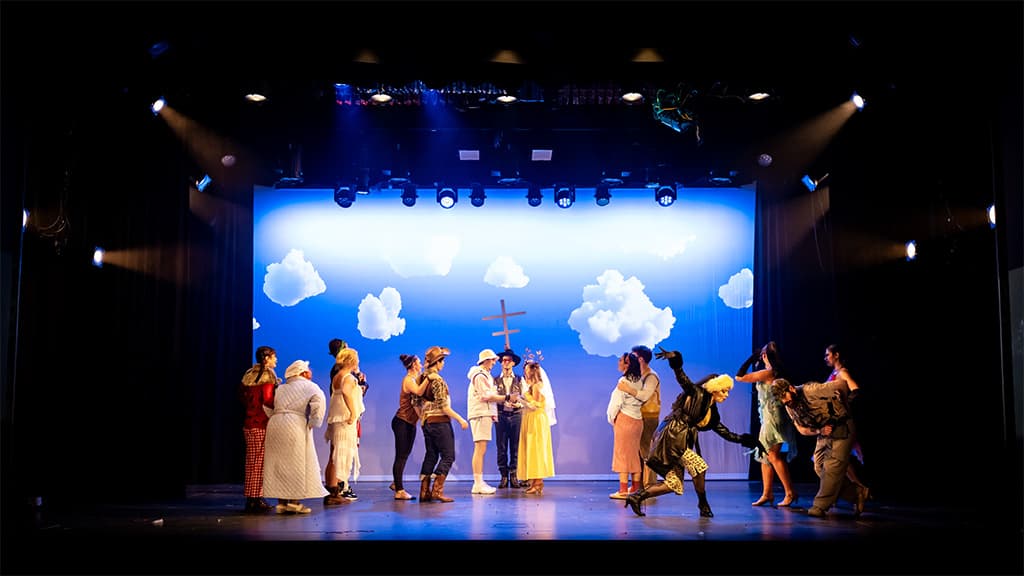
LEASE ON LIFE
The client is the University of Sydney. The Footbridge Theatre started life in the ’60s as the university’s Union Theatre then soon became so inspired by a freshly-constructed concrete pedestrian bridge over nearby Parramatta Road, changed its name to the Footbridge Theatre. As a 500-ish capacity space, it was leased out to commercial operators for many years before the university decided to claim it back – bricking up the proscenium and turning it into a number of multipurpose spaces.
Now, the worm has turned. The Sydney Conservatorium of Music recently launched a musical theatre degree and wanted its Footbridge Theatre back.
The theatre halves its capacity (it’s now ~230-ish) to reserve space at the rear of the building for dance studios. But the proscenium arch returns. In fact, just about every aspect of the project is entirely fresh.
LECTURE NOTES
Theatres might be ‘hard’ but a theatre that also needs to be a lecture hall is harder. Not only did Craig’s team and MNGD need to meet the client brief, it needed to meet an existing university lecture theatre spec and the IT department and the Con weren’t always singing from the same hymn book.
After much wrangling, the control system helped to bridge the gap. Peter Moorey explains:
“Our brief was to provide two base operating modes: a very simple Presentation mode where a lecturer or any university staff member can walk in and use the space in an intuitive fashion without needing someone on site to operate the gear.
The other is a Performance mode, where the Allen & Heath mixing console and the ETC Ion lighting console are activated and needs operators.”
QSC touchpanels are strategically dotted about the theatre – a no-nonsense touchpanel at the lectern, for example, and thoroughly comprehensive touchscreens at the stage manager’s console and bio booth.
“”
The Footbridge Theatre is a grownup venue with professional staff, and this system, with Q-SYS at its heart, is the system this theatre deserves
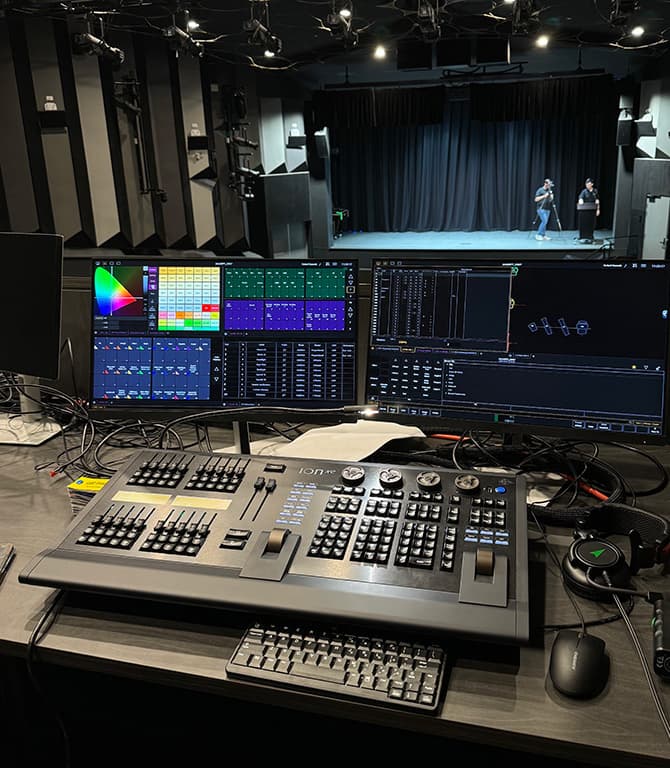
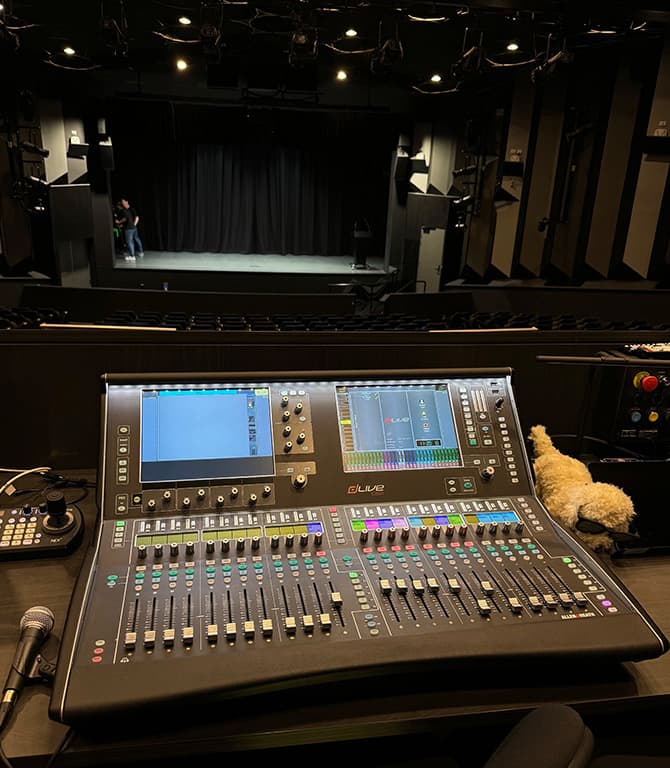
SIMPLE AIN’T EASY
Simple (or Presentation) mode might sound simple but requires considerable power and complexity beneath the surface.
“We regularly have those type of client conversations,” explains Craig Gamble. “‘Do you want one-button simplicity, where everything just works?’ Well, that comes at a premium because you need really smart gear and smart programming to do that. Some clients are happy to invest in that and others aren’t. The Footbridge Theatre is a grownup venue with professional staff, and this system, with Q-SYS at its heart, is the system this theatre deserves.”
In this case, Presentation mode sets the house lights, drops down the projection screen and sparks up the Digital Projection projector. It activates the microphones and is ready to accept the lecturer’s laptop HDMI connection. Simple.
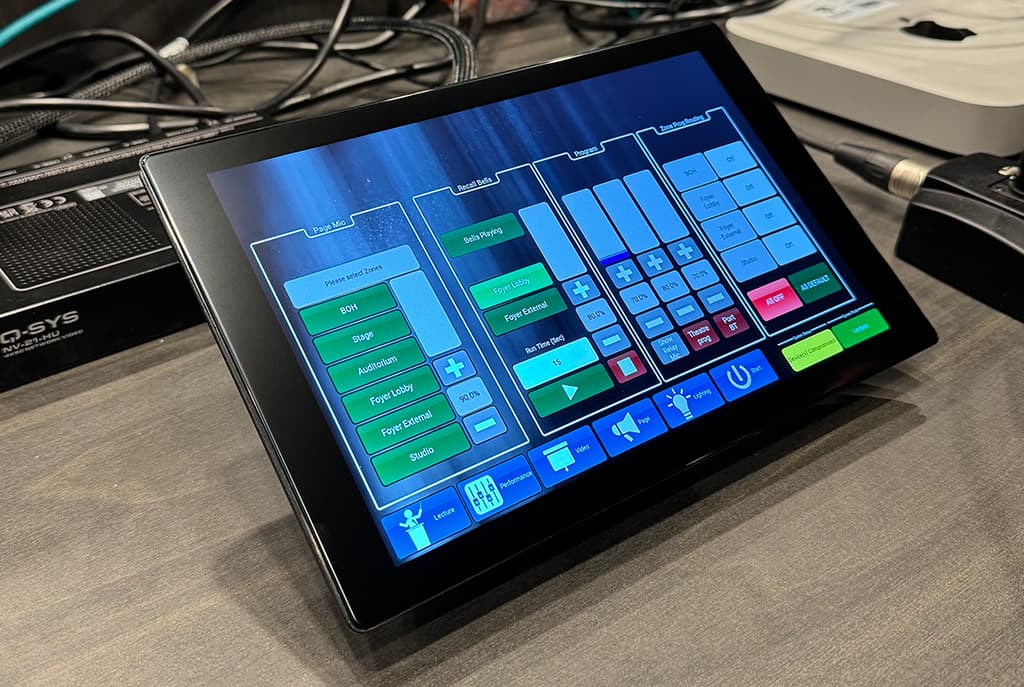
CORE MEMORIES
Getting everything routed, switched on/off, and/or active, requires a frame that can handle all the various connections and languages required to interface with all the technology. A Q-SYS Core 510i does the heavy lifting for the Footbridge Theatre. It has I/O slots for GPIO relay switching, network ports (obviously), along with RS232 and more: “The 510i provides the capability to install hardware Dante cards,” explains Peter Moorey. “The cards support hardware Dante at 96k, which was the requirement for interfacing with the A&H D-Live audio console. In the case of the d&b V Series loudspeaker system, in Performance mode the console is direct into the d&b DS10 Audio Network Bridge via Dante with Q-SYS looking after the other systems. While in Presentation mode the PA receives analogue audio from the Core. The Q-SYS system is also helping us with our 100V line paging system. We used the CX amplifier GPIOs to override local attenuators in the various paging zones – each amp has a relay which was perfect for this.
“They’re some examples of how the Q-SYS Core helps us get as much of the tech under the one umbrella as possible. The programming was straightforward. All the blocks were provided in the Q-SYS Designer and it was just a matter of dropping them in, wiring them up, and within minutes we were able to change routes on the amplifiers or turn lights on and off in the theatre.”
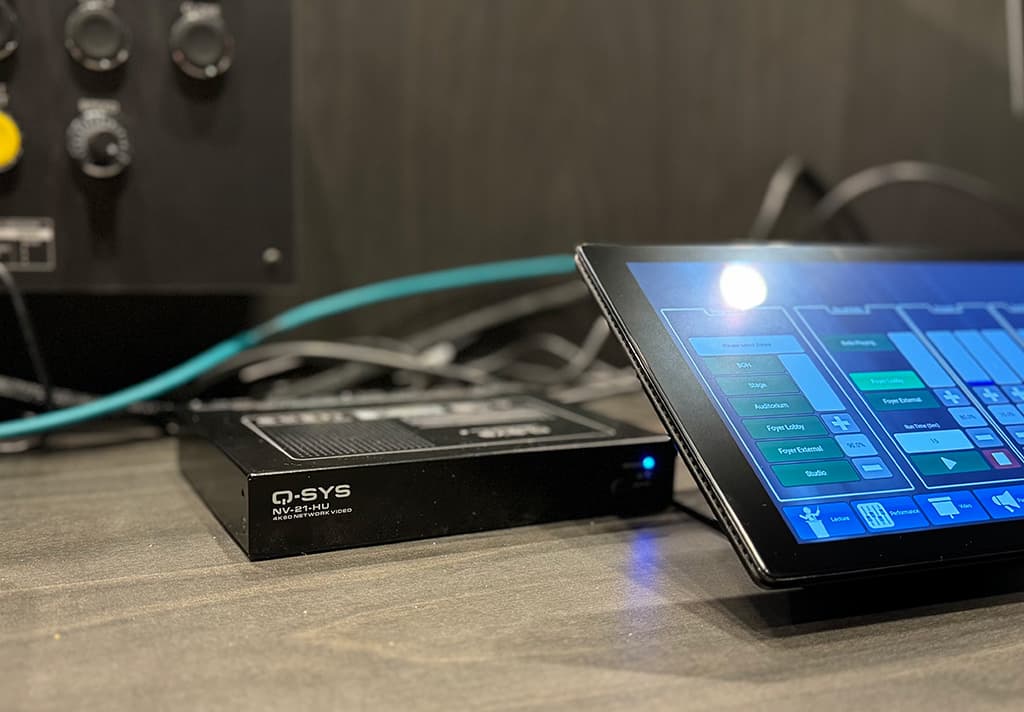
VIDEO? CHOOKERS
Q-SYS also formed the backbone of both the presentation and back of house video distribution. Peter Moorey explains: “In a theatre, video distribution typically serves two main purposes: back-of-house video, which involves distributing the stage view camera feed to areas like dressing rooms, green rooms, and foyer displays; and Presentation Video, which covers presenting content on projectors or other display surfaces during performances or events.
“On this project we’ve been able to use the Q-SYS NV platform for both purposes, giving us exceptional flexibility and scalability to adapt to current needs and future developments.
“Wherever there’s a display, you’ll find an NV-21 set to decoder mode. At the stage manager’s console, we’ve installed an NV-32 to drive the dual screens. There’s an encoder located in the lectern, and in the bio box, we have another endpoint for video presentation.
“A theatre video platform must be reliable, be low latency, and offer ease of maintenance. The requirements in a theatre can evolve over time as equipment is added or removed. Having a system that’s easy to program, update, and access, is a significant advantage. It ensures the system remains adaptable and user-friendly for both technical staff and end-users. The Q-SYS NV platform gives the theatre all of that.”
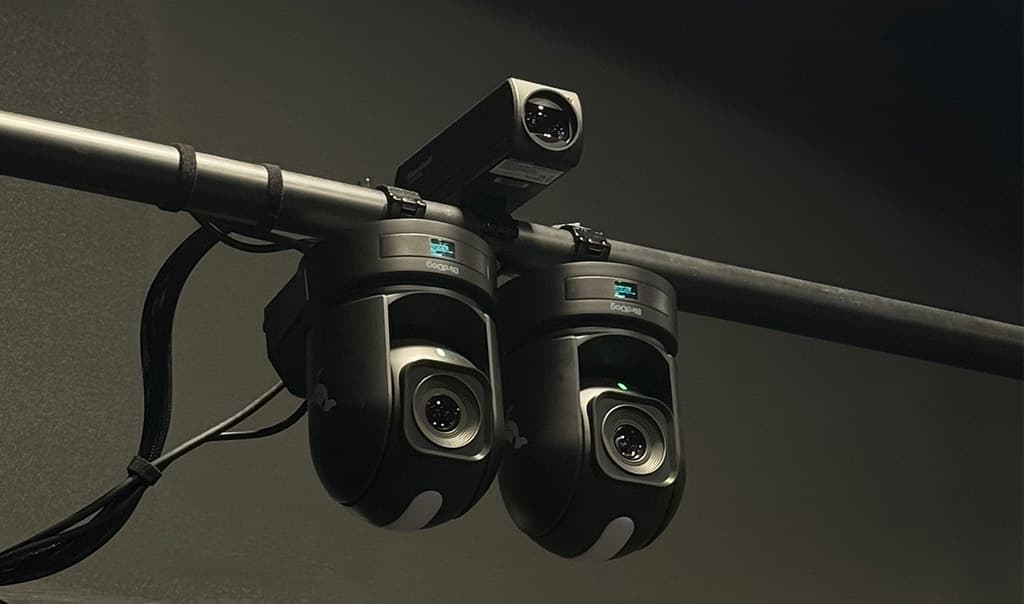
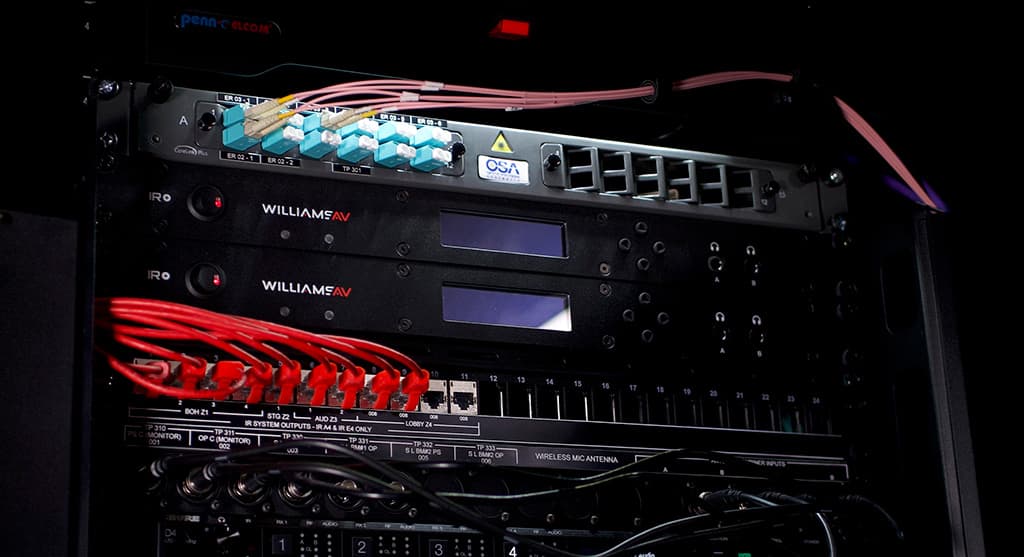
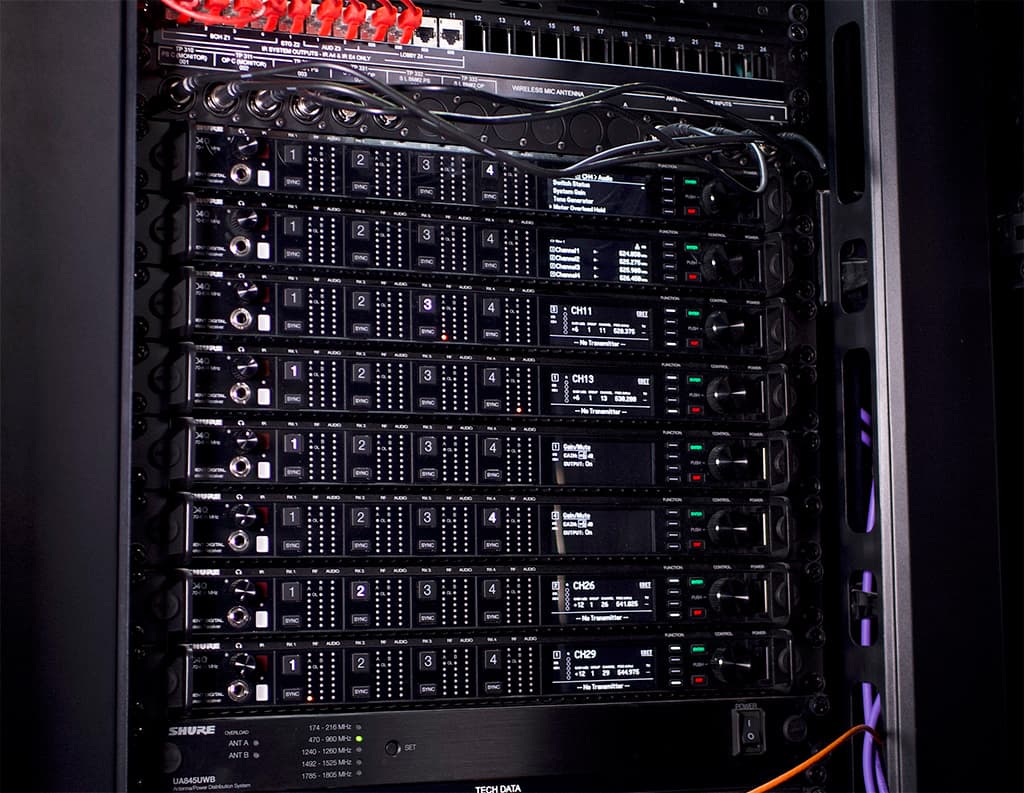
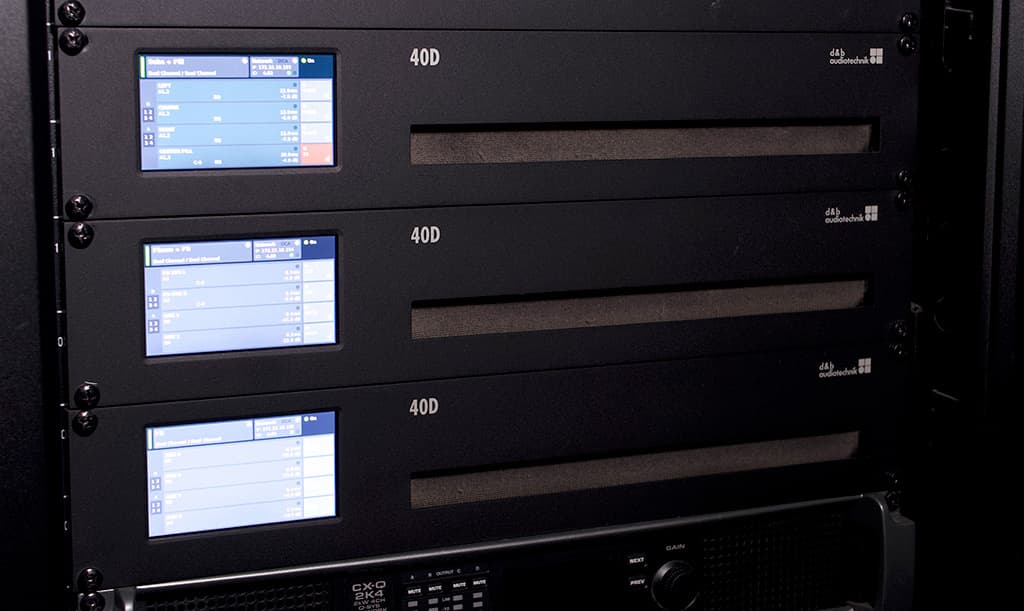
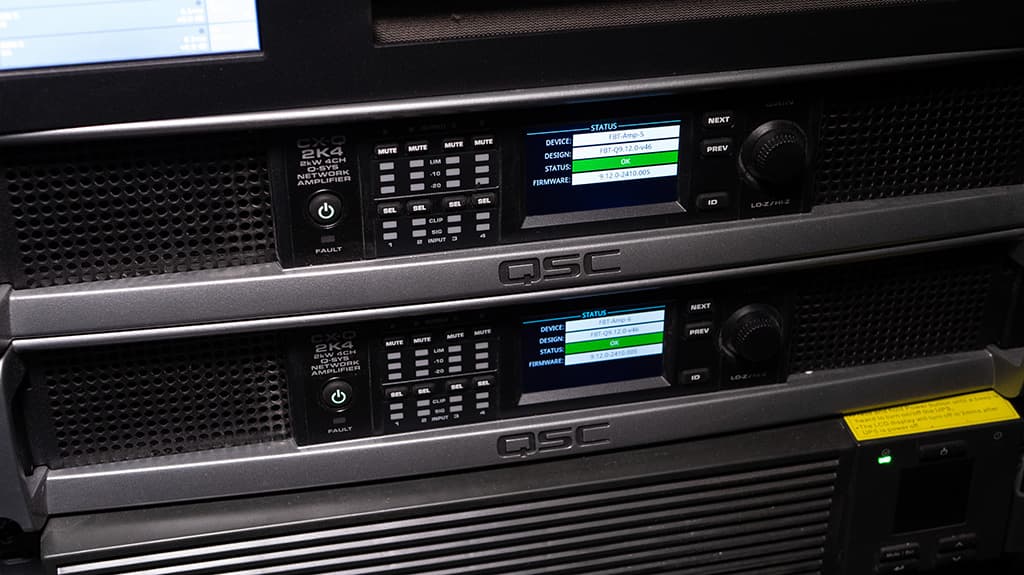
ALRIGHT ON THE NIGHT
Geordie Marsh was appointed into the role of Theatre Operations Manager only months before the Footbridge Theatre was due to open. One of the hard deadlines was the final year students’ end of year production, Into The Woods. It was quite the baptism of fire that would stress test the various elements of the design, as Geordie explains:
“We threw everything we had at Into The Woods. We had our A&H S-Link stageboxes out; we had our Green-Go wired and wireless comms fully deployed; we made extensive use of the staging capabilities, with 31 fly lines in action, leaving only two locked off; all 24 Shure headset microphones and wireless packs were running; the Digital Projection projector was firing at the cyc, while our Panasonic second projector was taking care of some pixel mapping on stage; and the stage managers station was fully operational.
“The Q-SYS system was instrumental, not just for show operations but also for pre-show and even pre-pre-show activities. For instance, it was used to control basic work lights for dance warmups before transitioning control over to the lighting operator.
“Additionally, Q-SYS handled functions like backstage paging and show relay for both audio and video.
“The results were polished and the systems performed reliably throughout the production.”
Setting Line (Theatre Consultant): settingline.com.au
MNGD (AV Integration): mngd.tech
ITE (Stage Engineering): ite.net.au
Hansen Yuncken (Builder): hansenyuncken.com.au
TAG (QSC, A&H): tag.com.au


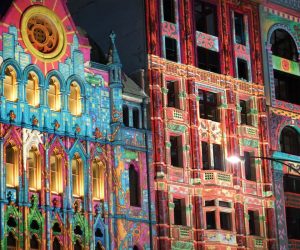
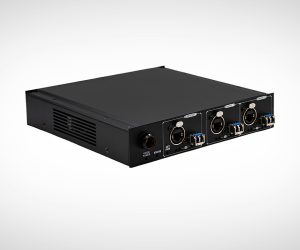

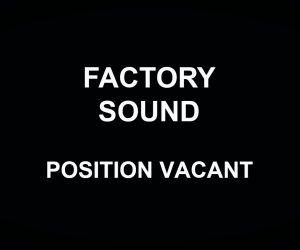

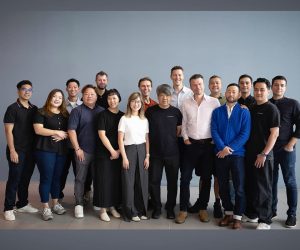

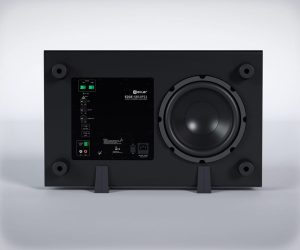

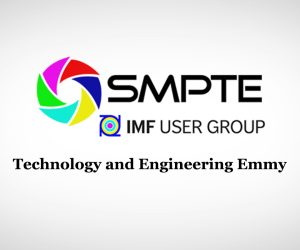



RESPONSES